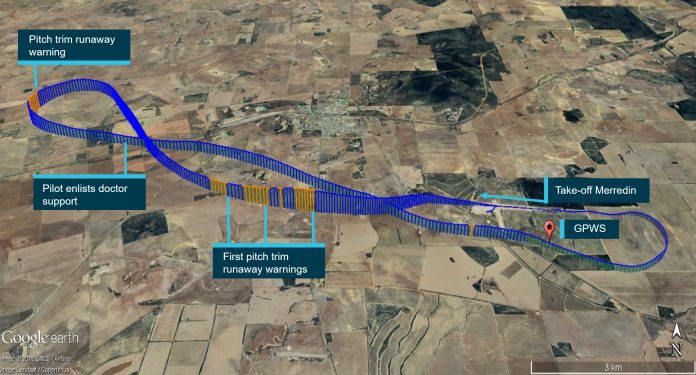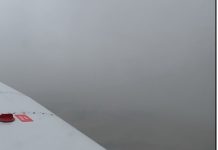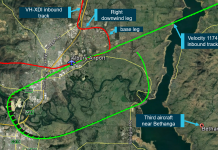The Australian Transport Safety Bureau (ATSB) has cited cockpit design as a factor in a trim runaway incident to a Royal Flying Doctor Service Pilatus PC-12 NG. A doctor onboard the aircraft had to be summoned to the cockpit to pull back on the co-pilot’s yoke against the pitch-down trim so the aircraft could be landed.
The aircraft was taking a non-urgent patient from Merredin, in the Western Australian wheat belt, to Jandakot. It took off in the early minutes of 14 April 2019, with a doctor, nurse and the patient as passengers. The sky was clear with minimal ambient and celestial light.
About 90 seconds after take-off, at about 140 knots and a height of about 1400 feet AGL, a ‘pitch trim runaway’ spoken warning sounded and the pitch trim moved nose-down without any pilot or autopilot inputs. Despite pulling on the control yoke with both arms, the pilot was unable to stop a 2000-fpm descent from developing. Working from memory, the pilot enacted the emergency drill for pitch trim runaway. The ATSB found the pilot had inadvertently selected the flap interrupt switch rather than the trim interrupt switch. The two switches are close to each other on the central control pedestal.
The report says, ‘The similarities between the trim interrupt and flap interrupt switches and the proximal location of the two switches, unnecessarily increased the risk of mis-selection and contributed to the excessive out-of-trim condition.’
With no action taken to correct it, the pitch trim runaway continued for 16 seconds until it had reached full nose-down position. The pilot worked through the emergency procedure but, with no relief from the pitch down, reduced engine torque in an attempt to regain control, and after two minutes summoned the doctor to help.
On its return to Merredin, the aircraft went through several pitch cycles, including a rapid descent to 350 feet AGL when the gear was lowered on downwind leg. This activated the ground proximity warning system. Airspeed in the entire incident varied between 210 and 125 knots, but the pilot managed to return for landing, which was flapless because they had been disabled by his inadvertent selection of the flap interrupt switch. Despite a pitch up on short final that set off the stall warning as the pilot was coordinating with the doctor to adjust the pitch attitude, the aircraft was undamaged and the occupants uninjured.
The ATSB found the emergency procedures and systems information in the PC-12 Pilot Operating Handbook did not provide effective guidance or enough information for pilots contending with a pitch trim runaway.
‘In this incident, the lack of effective guidance and systems information probably had an adverse influence on the pilot’s capability to resolve the uninterrupted trim runaway condition and was a critical factor,’ the report says.
The report also found the effectiveness of RFDS training and checking processes for pitch trim runaway had been undermined by incomplete systems knowledge and unrealistic practice exercises associated with training/checking in the aircraft. This had been a factor that increased risk, it found.
The mechanical factor contributing to the incident was the pitch trim down relay becoming stuck closed and continuing to provide power to the manual stabiliser trim motor until the pitch trim circuit breaker popped. Pilatus had developed solid-state relays for the PC-12 to replace mechanical pitch trim relays, but this change had not been fully implemented across the operating fleet because of limited parts availability.
Since the incident, Pilatus has sent a safety information letter to all PC-12 customers, operators and service centres. The RFDS revised its training and checking processes. But, as the ATSB notes, ‘The trim interrupt and flap interrupt switches on the PC-12 do remain identical and co-located, and there is potential for engineering controls to eliminate the mis-selection of the interrupt switches.’





How so ? What has changed based on your knowledge and experience with RFDS?
The world’s No 1 Aviation perfectionist speaks Paul!
The other Paul.